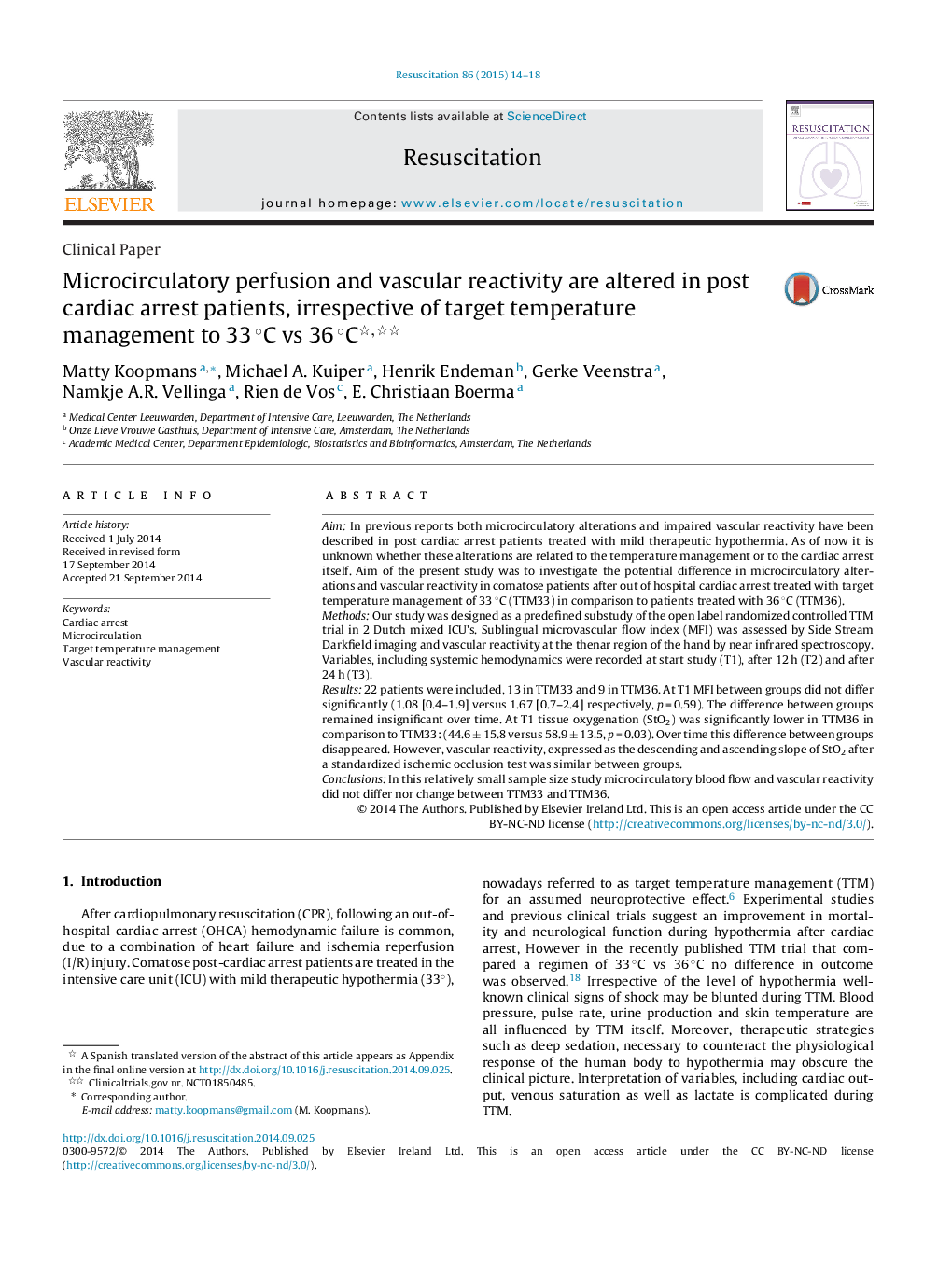| Article ID | Journal | Published Year | Pages | File Type |
|---|---|---|---|---|
| 5998066 | Resuscitation | 2015 | 5 Pages |
AimIn previous reports both microcirculatory alterations and impaired vascular reactivity have been described in post cardiac arrest patients treated with mild therapeutic hypothermia. As of now it is unknown whether these alterations are related to the temperature management or to the cardiac arrest itself. Aim of the present study was to investigate the potential difference in microcirculatory alterations and vascular reactivity in comatose patients after out of hospital cardiac arrest treated with target temperature management of 33 °C (TTM33) in comparison to patients treated with 36 °C (TTM36).MethodsOur study was designed as a predefined substudy of the open label randomized controlled TTM trial in 2 Dutch mixed ICU's. Sublingual microvascular flow index (MFI) was assessed by Side Stream Darkfield imaging and vascular reactivity at the thenar region of the hand by near infrared spectroscopy. Variables, including systemic hemodynamics were recorded at start study (T1), after 12 h (T2) and after 24 h (T3).Results22 patients were included, 13 in TTM33 and 9 in TTM36. At T1 MFI between groups did not differ significantly (1.08 [0.4-1.9] versus 1.67 [0.7-2.4] respectively, p = 0.59). The difference between groups remained insignificant over time. At T1 tissue oxygenation (StO2) was significantly lower in TTM36 in comparison to TTM33: (44.6 ± 15.8 versus 58.9 ± 13.5, p = 0.03). Over time this difference between groups disappeared. However, vascular reactivity, expressed as the descending and ascending slope of StO2 after a standardized ischemic occlusion test was similar between groups.ConclusionsIn this relatively small sample size study microcirculatory blood flow and vascular reactivity did not differ nor change between TTM33 and TTM36.
